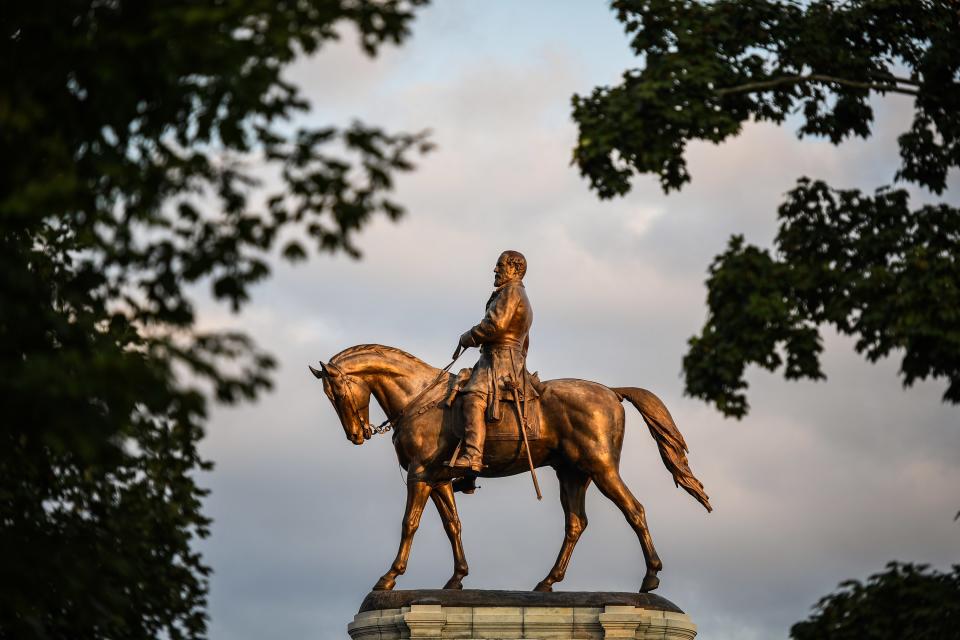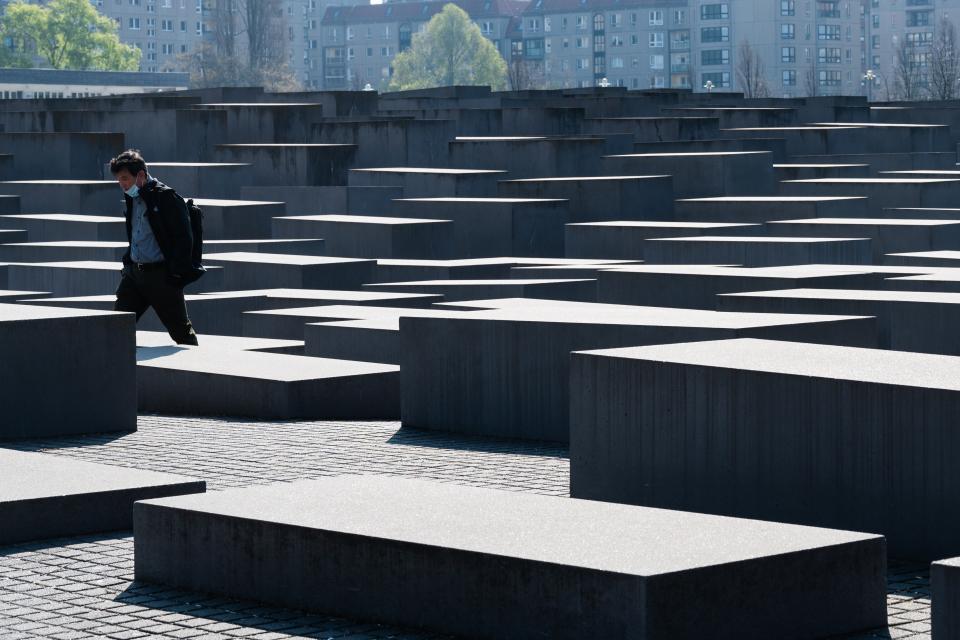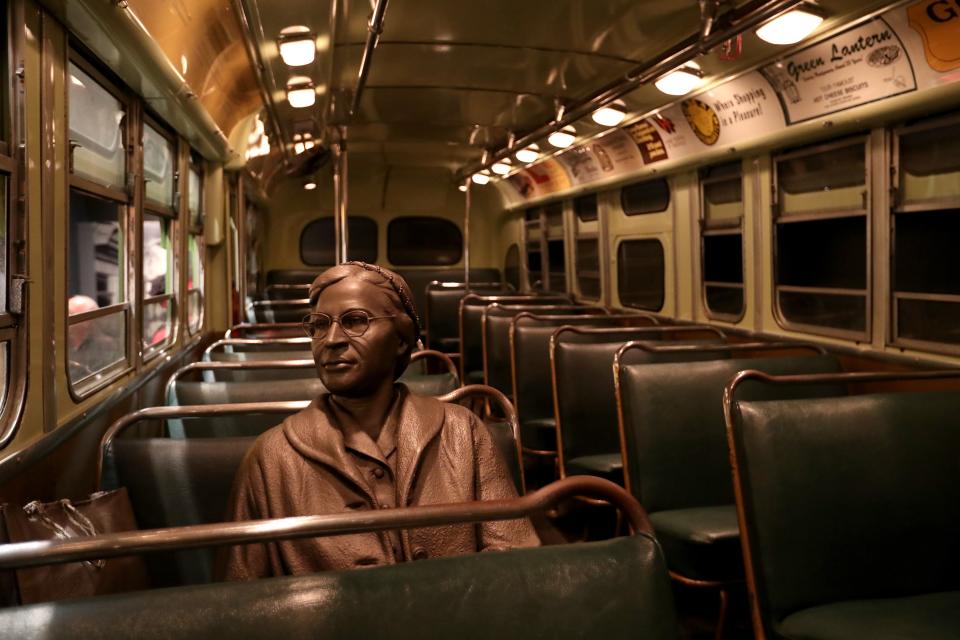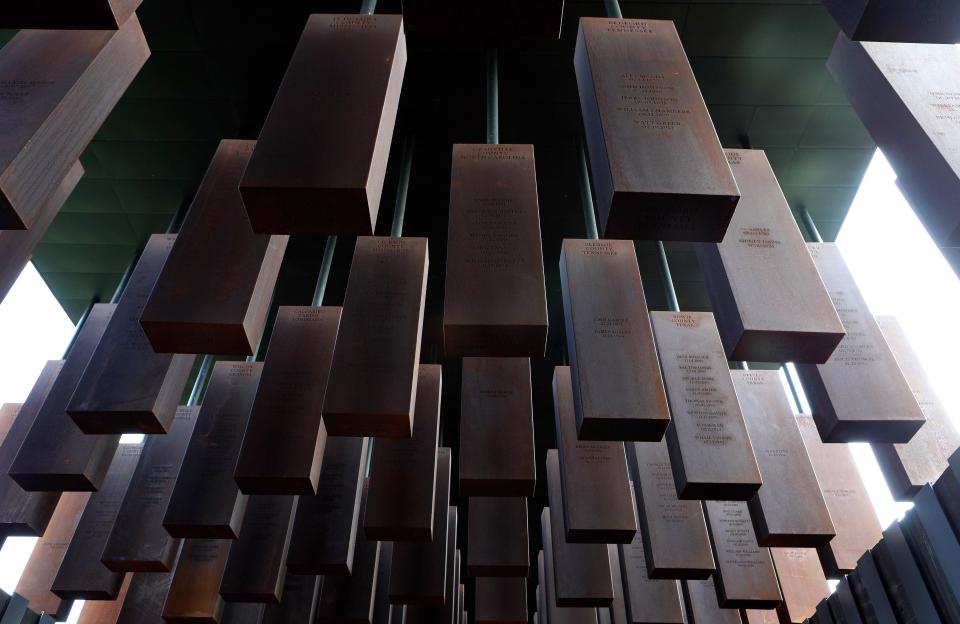What Should Happen to Confederate Statues in the U.S.
At the center of a controversy stands a prominently placed statue of Robert E. Lee on horseback in Richmond, Virginia. In the weeks following the killing of George Floyd and the resulting protests that have swept the nation, protesters have scrawled messages in support of the Black Lives Matter movement onto the statue’s base and called for its removal. And though Judge Bradley B. Cavedo issued an injunction to stop its removal, Virginia governor Ralph Northam has promised it will come down.
According to a report by the Southern Poverty Law Center, the statue in question is one of a whopping 230 monuments and place names throughout the United States honoring Lee, the leader of the Confederate States Army during the Civil War, despite the fact that Lee himself opposed the creation of Confederate monuments. The SPLC’s report identified more than 1,700 symbols of the Confederacy in public places throughout the U.S., including monuments and statues, flags, holidays, and the names of schools, highways, parks, bridges, cities, counties, military bases, lakes, and other public works. Most of them were not erected immediately following the Civil War but decades later.

VAMONUMENTS
“Although some Confederate monuments were erected soon after the Civil War for reasons of memorialization, many were erected in subsequent years to serve to promote a Lost Cause mythology and to advance the ideals of white supremacy,” Paul Edmondson, president of the National Trust for Historic Preservation, told AD. “Many of those monuments still stand but as symbols of those ideologies, and some of them have served as rallying points for bigotry and hate today.”
From around 1900 through well into the 1920s—when states began enacting Jim Crow laws meant to deny Black Americans equal rights and the Ku Klux Klan saw a major resurgence—and again from the 1950s through the 1960s during the Civil Rights Movement, there were two spikes in the dedication of Confederate monuments and other symbols. The United Daughters of the Confederacy (founded in 1894, nearly 30 years after the Civil War ended) were responsible for erecting more than 700 monuments and memorials glorifying the Confederacy. The group now denounces the propagation of white supremacy and calls on anyone promoting it to cease using Confederate symbols. Yet, as we have seen in the deadly rally in Charlottesville in 2017, these monuments continue to elicit support from white supremacists and exacerbate racial tensions.
“The nearly 1,800 symbols across the country that simultaneously honor the Confederacy and foster systemic anti-Black racism must come down from public land, and any public or military assets currently named after traitors to our country must be renamed,” Lecia Brooks, spokeswoman for the Southern Poverty Law Center, told AD. “We must always remember that Confederate symbols were put in place to assert white supremacy and continue to give life to the false narrative that the Civil War was fought for anything other than to preserve the enslavement of Black people. These symbols have been used by white supremacists to dehumanize and subjugate Black people since the Confederacy was founded, and their intentional harms continue to this day.”

Coronavirus - Berlin
The need to remove symbols of the Confederacy seems like a no-brainer. Why descendants of the losers of a war that nearly tore the United States apart were allowed to erect and display such symbols in public places to begin with is mind-boggling. In Germany, Nazi symbols were removed from all public places immediately following the Second World War and a ban on swastikas and other Nazi symbology is codified in the German constitution. That doesn’t mean Germans deny their history—in fact, Holocaust denial is a crime. Rather, allusions to the war are dedicated to remembering its victims. Go to Berlin and you’ll be hard-pressed to miss the Memorial to the Murdered Jews of Europe—the 19,000-square-meter memorial made up of 2,711 gray concrete slabs occupies a prominent place in the heart of the city center just steps from the Brandenburg Gate. In the chic neighborhood of Mitte, you’ll see plaques on buildings explaining the atrocities that occurred there during the war.
Though some people say that removing symbols of the Confederacy erases our history, we need to confront our history and the false narratives that euphemize it so we can begin to heal. Clearly, many Americans—including state and local politicians—agree. In addition to the statue of Robert E. Lee in Richmond, a handful of other Confederate monuments have been felled by protesters or removed by politicians in Montgomery, Alabama; Alexandria, Virginia; Louisville, Kentucky; Indianapolis, Indiana; Jacksonville, Florida; and other cities across the U.S.

National Civil Rights Museum Tour
According to Brent Leggs, executive director of the National Trust for Historic Preservation’s African American Cultural Heritage Action Fund, which aims to preserve Black historic sites across the U.S., it’s time to replace Confederate memorials with symbols that represent who we are as a culture now. Until recently, the National Trust for Historic Preservation did not advocate for the removal of Confederate monuments, but the organization shifted its stance in response to the horrific killings of George Floyd, Breonna Taylor, Ahmaud Arbery, and others. The National Trust now supports removing such monuments from public spaces and relocating them to museums or other places where they can be contextualized and reinterpreted.
“Through meaningful dialogue, history, and the arts, our nation should explore how best to communicate the often-overlooked contributions and examples of Black excellence and activism to demonstrate our collective and contemporary values in public spaces,” Leggs said, adding, “We should use this moment to create a more inclusive American landscape and public space that fills gaps in this nation’s civic identity.”
What if, instead of statues of Robert E. Lee, Jefferson Davis, and other Confederate leaders, there were statues of Harriet Tubman, W.E.B. Du Bois, Martin Luther King Jr., Rosa Parks, and other Black heroes? What if there were plaques dedicated to remembering the selling of enslaved people, the lynching of African Americans, and other atrocities committed against Black Americans?

Montgomery Cityscapes and City Views
Unveiled in 2018, the National Memorial for Peace and Justice in Montgomery, Alabama, offers a powerful alternative. Inspired by the Memorial to the Murdered Jews of Europe in Berlin and the Apartheid Museum in Johannesburg, South Africa, it confronts visitors with more than 800 hanging columns made of Corten steel that represent the lynching victims killed in 800 U.S. counties. Each column is inscribed with the names of known victims, and on the grounds surrounding the memorial stand sculptures and other artworks by artists including Hank Willis Thomas and Dana King.
According to Leggs, “Communities have the opportunity to bring people together to ask: What history deserves the prominence of this public space?”
The time has come for communities to come together and begin searching for answers.
Originally Appeared on Architectural Digest

